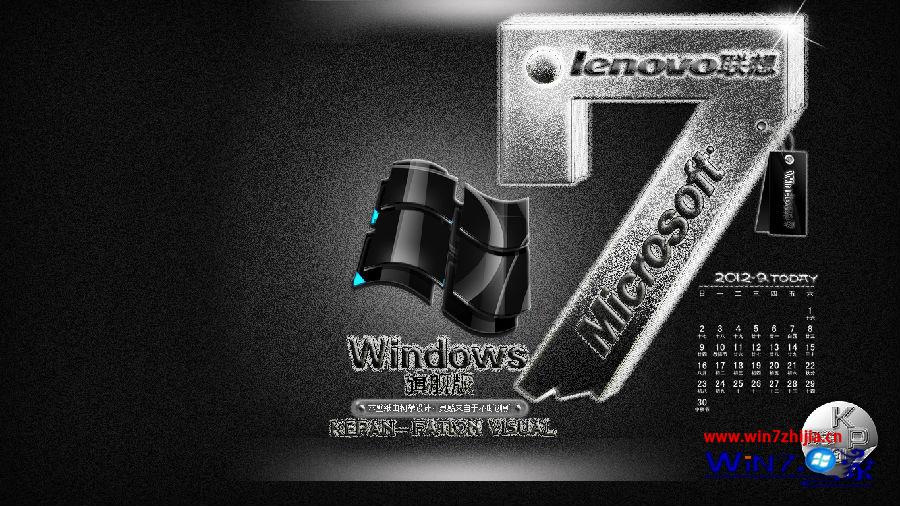好久没有写技术文章了,今天就写一点点关于C#的使用心得吧。
1、代码问题:
以前我总是这样写代码:
 //m_isSomeEvent:bool
//m_isSomeEvent:bool if(m_isSomeEvent){
if(m_isSomeEvent){ m_isSomeEvent;=false
m_isSomeEvent;=false }else{
}else{ m_isSomeEvent;=true
m_isSomeEvent;=true }
}后来这样写:
 m_isSomeEvent;=m_isSomeEvent?false:true
m_isSomeEvent;=m_isSomeEvent?false:true再后来这样写:
 m_isSomeEvent;=!m_isSomeEvent;
m_isSomeEvent;=!m_isSomeEvent;类似的有:
 if(this.m_button.Text==i_someString){
if(this.m_button.Text==i_someString){ this.m_button.Enabled;=true
this.m_button.Enabled;=true }else{
}else{ this.m_button.Enabled;=false
this.m_button.Enabled;=false }
}后来就写成:
 this.m_button.Enabled;=this.m_button.Text;==i_someString;
this.m_button.Enabled;=this.m_button.Text;==i_someString;有什么区别吗?没有,只能说我是越来越懒了。
字符串问题:
以前总是这样写:
 stringm_path;="c:\\test\\"+"MyFolder"+"\\someFile.dat"
stringm_path;="c:\\test\\"+"MyFolder"+"\\someFile.dat"后来会这样写:
 stringm_path;=string.Format("{0}\\{1}\\{2}",i_drive,i_path,i_file);
stringm_path;=string.Format("{0}\\{1}\\{2}",i_drive,i_path,i_file);再后来这样写:
 stringm_path;=Path.Combine(Path.Combine(i_drive,i_path),i_file);
stringm_path;=Path.Combine(Path.Combine(i_drive,i_path),i_file);虽然有点麻烦,但比起因为路径出错而造成的麻烦,这算不了什么。
还有就是,以前这样写:
 stringm_filePath;=".\myFile.dat"//在程序正在运行的目录里取文件。
stringm_filePath;=".\myFile.dat"//在程序正在运行的目录里取文件。后来这样写:
 stringm_filePath;=Path.Combine(AppDomain.CurrentDomain.BaseDirectory,"myFile.dat");
stringm_filePath;=Path.Combine(AppDomain.CurrentDomain.BaseDirectory,"myFile.dat");理由就不用说了,安全第一。
还有一个就是:
 stringm_fullPath;="c:\\test1\\test2\\file.dat"
stringm_fullPath;="c:\\test1\\test2\\file.dat" //Some;code;withe;the;path;to;create;the;file.
//Some;code;withe;the;path;to;create;the;file.后来总要这样:
 stringm_fullPath;="c:\\test1\\test2\\file.dat"
stringm_fullPath;="c:\\test1\\test2\\file.dat" if(!Directory.Exists(Path.GetDirectoryName(m_fullPath)))
if(!Directory.Exists(Path.GetDirectoryName(m_fullPath))) {
{ Directory.CreateDirectory(Path.GetDirectoryName(m_fullPath));
Directory.CreateDirectory(Path.GetDirectoryName(m_fullPath)); }
} //Some;code;withe;the;path;to;create;the;file.
//Some;code;withe;the;path;to;create;the;file.再后来:
 stringm_fullPath;="c:\\test1\\test2\\file.dat"
stringm_fullPath;="c:\\test1\\test2\\file.dat" if(!Directory.Exists(Path.GetDirectoryName(m_fullPath)))
if(!Directory.Exists(Path.GetDirectoryName(m_fullPath))) {
{ try{
try{ Directory.CreateDirectory(Path.GetDirectoryName(m_fullPath));
Directory.CreateDirectory(Path.GetDirectoryName(m_fullPath)); }
} catch(Exception;ex)
catch(Exception;ex) {
{ MessageBox.Show(this,"Error!;Object;folder;"+m_fullPath+"does't;exist.;And;cann't;create;this;folder.;Message:"+ex.Message);
MessageBox.Show(this,"Error!;Object;folder;"+m_fullPath+"does't;exist.;And;cann't;create;this;folder.;Message:"+ex.Message); }
} }
} //Some;code;withe;the;path;to;create;the;file.
//Some;code;withe;the;path;to;create;the;file.代码虽然越来越多,但安全性却是越来越高。总之,代码能省的地方就该省,不能省的,一个也不能少。
还有这样的问题:
以前这样写函数:
 publicvoidSomeFunction(objecti_someObject){
publicvoidSomeFunction(objecti_someObject){ //
// }
}后来一般情况我都会先选择这样的代码:
 publicvoidSomeFunction(refobjecti_someObject){
publicvoidSomeFunction(refobjecti_someObject){ //
// }
}
还有一个小问题,就是我喜欢在所有的成员使用上加上this,因为这样可以直接知道它是成员还是函数内的局部变量。
2、再讨论一个try-catch结结构:
以前这样写:
模块A中的某函数:
 publicobjectSomeFunction(refobjecti_someParameter){
publicobjectSomeFunction(refobjecti_someParameter){ SomeObject;m_tempObject;=newSomeObject();;//m_tempObect;need;release;after;use;it.
SomeObject;m_tempObject;=newSomeObject();;//m_tempObect;need;release;after;use;it. objectm_result;=null
objectm_result;=null //Some;code;with;SomeObject;m_tempObject;
//Some;code;with;SomeObject;m_tempObject; m_tempObject.Dispose();
m_tempObject.Dispose(); returnm_result;
returnm_result; }
} //模块B中的调用:
//模块B中的调用: objectm_myObject;=SomeFunction(refm_somePar);
objectm_myObject;=SomeFunction(refm_somePar);后来遇到问题,在调用时不得不这样:
 objectm_myObject;=null
objectm_myObject;=null try{
try{ m_myObject;;=SomeFunction(refm_somePar);
m_myObject;;=SomeFunction(refm_somePar); }catch(Exception;ex){
}catch(Exception;ex){ //Some;code;
//Some;code; }
}然而,这样问题就来了,当调用SomeFunction出现异常后,SomeFunction中的m_tempObject对象根本没有机会调用Dispose来释放资源。
于是修改代码为:
模块A中的函数:
 publicobjectSomeFunction(refobjecti_someParameter){
publicobjectSomeFunction(refobjecti_someParameter){ SomeObject;m_tempObject;=newSomeObject();;//m_tempObect;need;release;after;use;it.
SomeObject;m_tempObject;=newSomeObject();;//m_tempObect;need;release;after;use;it. objectm_result;=null
objectm_result;=null try{
try{ //Some;code;with;SomeObject;m_tempObject;
//Some;code;with;SomeObject;m_tempObject; }catch(Exception;ex){
}catch(Exception;ex){ m_result;=null
m_result;=null //some;code
//some;code }
} finally{
finally{ m_tempObject.Dispose();
m_tempObject.Dispose(); }
} returnm_result;
returnm_result; }
}模块B中的调用:
 objectm_myObject;=SomeFunction(refm_somePar);
objectm_myObject;=SomeFunction(refm_somePar); if(m_myObject;==null){
if(m_myObject;==null){ //some;code
//some;code }else{
}else{ //some;code
//some;code }
}然而这样还是有问题,就是你不知道调用模块A中的函数时,当返回null后,A中到底出现了什么问题。
也就是说,这里我想让B模块来Catch异常,而不想让A模块来处理。
简单的办法是在A模块的函数中catch到异常后,重新再抛出一个新异常:
 publicobjectSomeFunction(refobjecti_someParameter){
publicobjectSomeFunction(refobjecti_someParameter){ SomeObject;m_tempObject;=newSomeObject();;//m_tempObect;need;release;after;use;it.
SomeObject;m_tempObject;=newSomeObject();;//m_tempObect;need;release;after;use;it. objectm_result;=null
objectm_result;=null try{
try{ //Some;code;with;SomeObject;m_tempObject;
//Some;code;with;SomeObject;m_tempObject; }catch(Exception;ex){
}catch(Exception;ex){ m_result;=null
m_result;=null //some;code
//some;code thrownewException("Some;message");
thrownewException("Some;message"); }
} finally{
finally{ m_tempObject.Dispose();
m_tempObject.Dispose(); }
} returnm_result;
returnm_result; }
}这样B模块中可以知道A中发生了什么事情,从而进一步处理。然而这样的问题是:
系统性能下降和异常类的改变。当然,如果直接抛出原来的异常也行,但那样没有必要,后来这样改代码:
模块A的函数:
 publicobjectSomeFunction(refobjecti_someParameter){
publicobjectSomeFunction(refobjecti_someParameter){ using(SomeObject;m_tempObject;=newSomeObject()){
using(SomeObject;m_tempObject;=newSomeObject()){ objectm_result;=null
objectm_result;=null //some;code;with;m_tempObject;
//some;code;with;m_tempObject; returnm_result;
returnm_result; }
} }
} //模块B的调用:
//模块B的调用: objectm_myObject;=null
objectm_myObject;=null try{
try{ m_myObject;;=SomeFunction(refm_somePar);
m_myObject;;=SomeFunction(refm_somePar); }catch(Exception;ex){
}catch(Exception;ex){ //Some;code;
//Some;code; }
}虽然B中还是用到了try-catch结构,但意义是不一样的。如果A是不可知模块,例如你是A模块提供方,那么这样的方法给你的用户提供了很好的灵活性。
如果你是A模块的使用方,那么你完全可以自己控制try-catch结构。
标签:



















